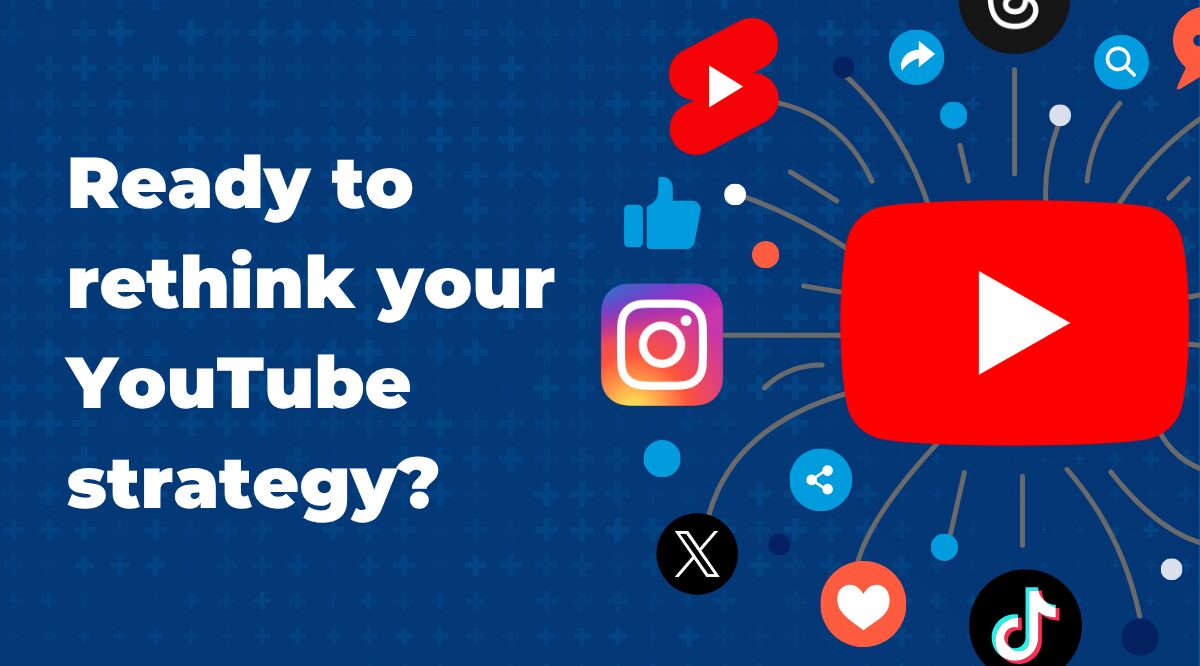
YouTube isn’t just the world’s biggest video platform, it’s also the second-largest search engine on the internet, trailing only Google. And as linear television viewership continues to decline, YouTube is becoming the go-to news, information, and entertainment hub for all audiences, even the seniors we still associate with traditional media.
Our Media Consumption Insights 2025 showed that YouTube now plays a central role in how people discover, consume, and return to content. But here’s the catch—many brands and campaigns still treat YouTube like a static content library. They post final videos, walk away, and hope the algorithm will take care of the rest.
Spoiler alert: it won’t.
Today, YouTube is a dynamic platform where audiences “tune in,” not just stumble in. Viewers browse Shorts on mobile like they scroll TikTok. They follow creators. They binge episodic series. They search for topics and trust results. The opportunity is huge, but only if your strategy matches how people actually use the platform.
So, how do you turn a passive channel into an active one?
1. Create with the Channel in Mind
The number one mistake? Posting videos designed for other platforms. Instead, make content with YouTube as the destination, not the afterthought. Think:
- Longform explainers and thought leadership
- Consistent brand storytelling
- Visual-first formatting with platform-native pacing
Whether you’re publishing interviews, motion graphics, or explainer reels, viewers can tell when a video was made for them—and when it wasn’t.
2. Use Shorts to Capture Attention
YouTube Shorts are one of the platform’s fastest-growing features. Use them to:
- Tease longer videos
- Deliver rapid-fire messages
- Introduce campaign themes or calls to action
Shorts help surface your brand to casual viewers and if they hit right, they drive deeper engagement with your full content library.
3. Post With Purpose, Not Just When You Have Assets
Most channels go quiet between campaigns. But the YouTube algorithm rewards consistency, not one-off uploads.
If you’re only uploading videos when a project wraps, you’re unintentionally signaling to your audience that there’s nothing worth subscribing to. Sporadic posting tells viewers, “Check back later—maybe.” Consistent, purposeful content tells them, “There’s more where that came from.”
Combat this by:
- Publishing on a regular cadence
- Planning content beyond paid video buys
- Using community posts and comments to boost engagement
Think of your YouTube channel not as a showcase of what’s done, but as an engine for ongoing audience engagement.
4. Cross-Promote to Build a Subscriber Base
Treat YouTube like any other core channel in your mix:
- Link to videos from newsletters, X, Threads, and Instagram
- Embed key content on your site
- Repurpose Shorts for Reels and TikToks
- Use creators or partner orgs to amplify reach
Subscription growth doesn’t happen in isolation. It happens when your audience is invited to come back—and given a reason to stay.
What This Means for Brand Comms
We’ve already seen the rise of creators and fragmented media habits reshape where people get information. YouTube sits right at that intersection, part search engine, part streaming platform, part influencer ecosystem.
If you want to make the most of it, you need to:
- Create content for YouTube, not just upload to it
- Leverage Shorts and longform together
- Think about the user journey, not just the file delivery
- Use the channel proactively, not reactively
Most of all, stop thinking of YouTube as a warehouse. Start thinking of it as a stage.
Ready to Rethink Your YouTube Strategy?
We help campaigns, causes, and brands build audience-first content strategies designed for where people actually watch. Want to turn your channel into a channel worth following?
Let’s talk.